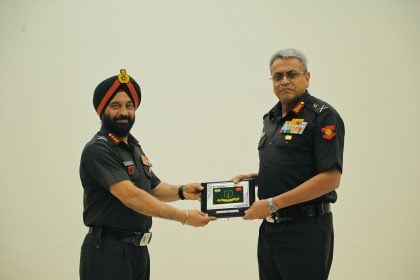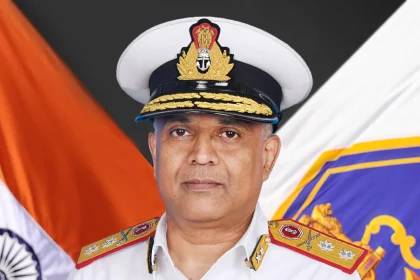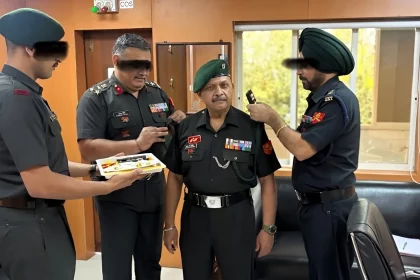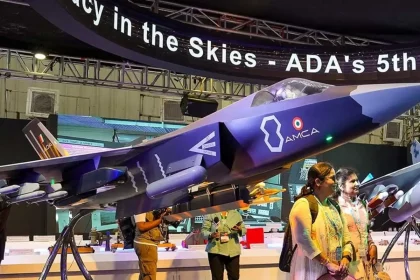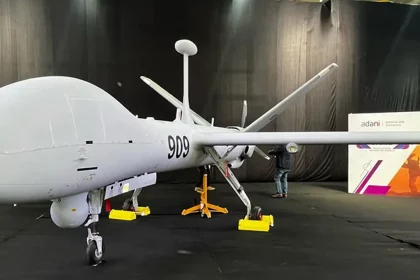Govt Signs ₹62,370 Crore Deal With HAL to Procure 97 LCA Tejas Mk-1A Jets for IAF
Second Major Tejas Mk-1A Contract With HAL Marks Milestone in IAF Modernisation, Generates Over 11,000 Jobs Annually.
Lt Gen Anindya Sengupta Visits Military Intelligence Training School in Pune, Stresses Cognitive Dominance in Future Battlefields
Central Command Chief Calls for Adaptive Thinking, Jointness, and Operational Excellence in Military Intelligence Training.
Surg Rear Admiral Dilip Raghavan Takes Charge as Command Medical Officer, Eastern Naval Command
Experienced ENT Specialist Surg Rear Admiral Dilip Raghavan Assumes Leadership of Medical Services at Eastern Naval Command.
Lt Colonel Prasad Purohit Promoted to the Rank of Colonel After 17 Years
As Purohit prepares for retirement, his story serves as a cautionary tale of the intersection between national security, political agendas,…
28 Private Firms Join HAL to Propel India’s Indigenous AMCA Stealth Fighter Program
28 Private Firms Compete to Partner with HAL in India’s Indigenous 5th-Generation AMCA Stealth Fighter Program, Accelerating Nation’s Aerospace and…
India Set to Issue ₹30,000 Crore RfP for Indigenous MALE Drones, Signals Major Defence Indigenisation Push
Defence Secretary Rajesh Singh Signals ₹30,000 Crore Indigenous Drone Programme, Emphasises Self-Reliance, Technology, and Competitive Procurement.


